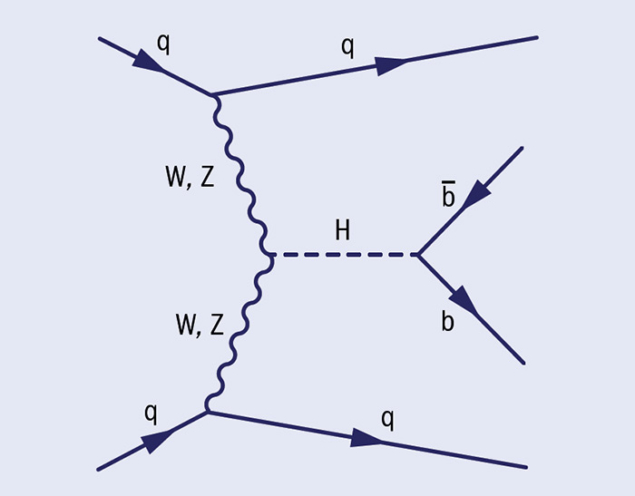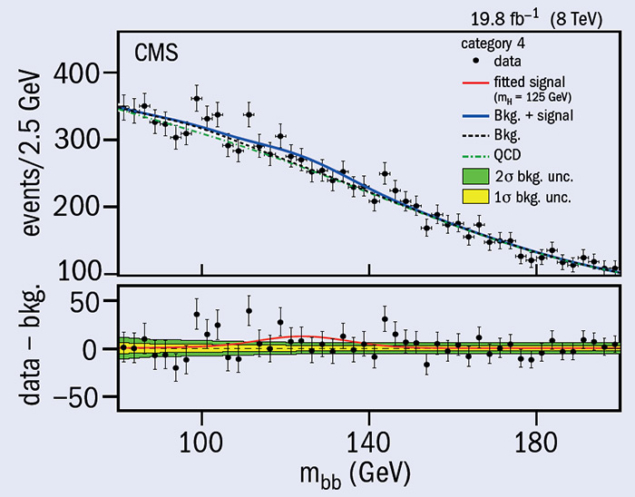
The mass of the Higgs boson discovered at CERN is close to 125 GeV. If it really is the Standard Model Higgs boson (H), it should decay predominantly into a bottom quark–antiquark pair (bb), with a probability of about 58%. Therefore, the observation and study of the H → bb decay, which involves the direct coupling of H to fermions and in particular to down-type quarks like d-, s- and b-quarks, is essential in determining the nature of the discovered boson. The inclusive observation of the decay H → bb is currently not achievable at the LHC: in proton–proton collisions, bb pairs are produced abundantly via the strong force as described via QCD, providing a completely irreducible background.

An intriguing and challenging way to search for H → bb is through the mechanism of vector-boson fusion (VBF). In this case, the signal features a four-jet final state: two b-quark (bb) jets originating from the Higgs-boson decay, and two light quark (qq) jets, predominantly in the forward and backward directions with respect to the beamline – a distinctive signature of VBF in proton collisions. An additional peculiar feature of VBF is that no QCD colour is exchanged in the processes. This leads to the expectation of a “rapidity gap” – that is, reduced hadronic activity between the two tagging qq jets, apart from Higgs boson decay products.

CMS has searched for these VBF-produced Higgs bosons decaying to b quarks in the 2012 8-TeV proton–proton collision data. This is the only fully hadronic final state that is employed to search for a Standard Model Higgs boson at the LHC. A crucial dedicated data-triggering strategy was put in place, both within standard “prompt” data streams and, in parallel, within “parked” data streams that were reconstructed later, during the LHC shutdown. Candidate events are required to have four jets with transverse momenta above optimized thresholds. Separation in terms of pseudorapidity (angle) and b-quark tagging criteria are employed to assign two jets to the bb system and the other two jets to the qq VBF-tagging jet system.

Selected events are passed to a multi-variate boosted decision tree (BDT) trained to separate signal events from the large background of multi-jet events produced by QCD. The events are categorized according to the output values of the BDT, making no use of the kinematic information of the two b-jet candidates. Subsequently, the invariant-mass distribution of two bjets is analysed in each category, to search for a signal “bump” on top of the smooth background shape. The figure shows the results of the fit in the best signal category. They reveal an observed (expected) significance of the signal of 2.2 (0.8)σ, for a Higgs-boson mass of 125 GeV. A parallel measurement of Z → bb decays in the selected data samples, using the same signal-extraction technique, has been performed to validate the analysis strategy.
The results of this search have been combined with results of other CMS searches for the decay of the Higgs boson to bottom quarks, produced in association with a vector boson, or with a top-quark pair. For mH = 125 GeV, the combination yields a fitted H → bb signal strength μ = 1.03 + 0.44, relative to the expectations of the Standard Model, with a significance of 2.6σ. This is a convincing hint from the LHC for the coupling of the discovered boson to bottom quarks.





